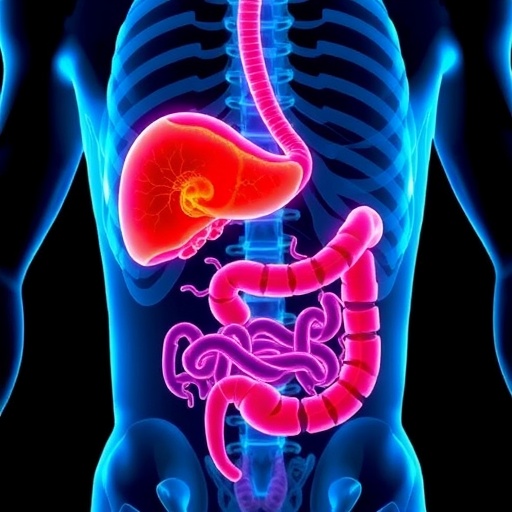Recent advancements in understanding hemorrhagic shock have shed light on therapeutic interventions aimed at mitigating its devastating effects on the body’s organ systems. As researchers delve deeper into this critical area of study, a groundbreaking investigation has emerged from a team led by Hof, along with Krüll, Schmitt, and others, which indicates that pyrrolidine dithiocarbamate (PDTC)—a small molecule known for its antioxidant properties—may play a pivotal role in the recovery of intestinal microvascular oxygenation. Their findings, published in the Journal of Translational Medicine, open up exciting avenues for clinical application and further research.
Hemorrhagic shock, characterized by a sudden drop in blood volume, poses a serious threat to survival. The reduced blood flow leads to tissue hypoxia and subsequent organ dysfunction, particularly within the gastrointestinal tract. This creates a vicious cycle where diminished cellular oxygenation exacerbates the damage inflicted by shock. Understanding this cycle is crucial for developing therapeutic strategies that can effectively reverse the damage caused by such acute conditions.
The work by Hof et al. employed a reversible model of hemorrhagic shock in rats to study the physiological effects of PDTC on intestinal oxygenation. Through careful experimentation, the research team was able to demonstrate that administering PDTC resulted in a significant acceleration of oxygenation in the intestinal microvasculature. This rapid response highlights the compound’s potential as a therapeutic agent during the critical window immediately following hemorrhagic injury.
The mechanism by which PDTC exerts its effects appears to involve its ability to modulate various biochemical pathways related to oxidative stress. By acting as an antioxidant, PDTC is thought to reduce the levels of reactive oxygen species that can cause cellular damage in the aftermath of shock. Furthermore, preliminary data suggest that PDTC may enhance the bioavailability of nitric oxide, a crucial mediator of vascular relaxation and blood flow, thereby facilitating the restoration of perfusion to damaged tissues.
One of the most compelling aspects of this study is its focus on intestinal microvascular oxygenation, a key factor in the overall prognosis for patients suffering from hemorrhagic shock. The ability of the intestines to recuperate their oxygen supply is tightly linked to the effectiveness of the body’s response to shock. If intestinal ischemia persists, subsequent complications such as gut barrier dysfunction and bacterial translocation can arise, leading to multi-organ failure. The prospect of PDTC mitigating these outcomes has profound implications for clinical management strategies.
Moreover, the rapid recovery of oxygenation observed in this study could have significant implications for surgical practices and emergency medicine. Considering that timing is of the essence in treating hemorrhagic shock, the ability to quickly stabilize intestinal oxygen levels may improve overall survival rates and decrease the incidence of complications related to sepsis and organ failure. Future clinical trials might investigate the appropriate dosing regimens for PDTC to maximize its therapeutic effect while minimizing any potential side effects.
As with any novel therapeutic approach, the translation of findings from animal models to human subjects requires cautious optimism. Although the results observed in the rat model are promising, further validation in human trials will be essential to determine the safety and efficacy of PDTC in treating hemorrhagic shock. This fact underlines the critical importance of interdisciplinary collaboration between researchers, clinicians, and pharmacologists in ensuring that breakthroughs in preclinical studies lead to tangible benefits for patients.
In light of the evidence presented by Hof and colleagues, the importance of investigating compounds like PDTC cannot be overstated. As researchers continue to navigate the complexities of cellular responses to trauma, the potential for repurposing existing pharmacological agents could accelerate the development of effective treatments for hemorrhagic shock and other related conditions. This work reaffirms the need for continued research in vascular biology and oxidative stress pathways to uncover new therapeutic targets that can address acute injuries.
Moreover, the findings instigate thought-provoking questions regarding the broader implications of oxidative stress in various pathological states. Beyond hemorrhagic shock, there may be an opportunity to explore the use of PDTC in other conditions characterized by oxidative damage and vascular dysfunction. For instance, can PDTC play a role in the management of shock from other causes, such as sepsis or trauma? The potential applications of this compound may very well extend beyond the gastrointestinal domain, warranting further investigation into its diverse effects on human physiology.
In summary, the study conducted by Hof et al. offers a promising glimpse into the future of therapeutic strategies for hemorrhagic shock. By illuminating the connection between pyrrolidine dithiocarbamate and intestinal microvascular oxygenation recovery, the research opens doors for new approaches to improve clinical outcomes for patients facing this life-threatening condition. As the scientific community rallies around this finding, the anticipation builds for subsequent research that could redefine our management of shock and its consequences in critical care settings.
In conclusion, while many questions remain to be answered, one thing is clear: the intersection of oxidative stress and vascular health is ripe for discovery, and contributions from studies like this one are crucial in paving the way toward new interventions that could ultimately save lives. With perseverance and innovation, the exploration of PDTC and similar compounds may forever change how we respond to the urgent medical challenges posed by hemorrhagic shock.
Subject of Research: Hemorrhagic Shock and Therapeutic Intervention
Article Title: Pyrrolidine dithiocarbamate accelerates early recovery of intestinal microvascular oxygenation in a reversible model of hemorrhagic shock in rats.
Article References:
Hof, S., Krüll, L., Schmitt, J. et al. Pyrrolidine dithiocarbamate accelerates early recovery of intestinal microvascular oxygenation in a reversible model of hemorrhagic shock in rats.
J Transl Med 23, 1285 (2025). https://doi.org/10.1186/s12967-025-07413-2
Image Credits: AI Generated
DOI: https://doi.org/10.1186/s12967-025-07413-2
Keywords: Hemorrhagic shock, pyrrolidine dithiocarbamate, intestinal microvascular oxygenation, oxidative stress, vascular health.




